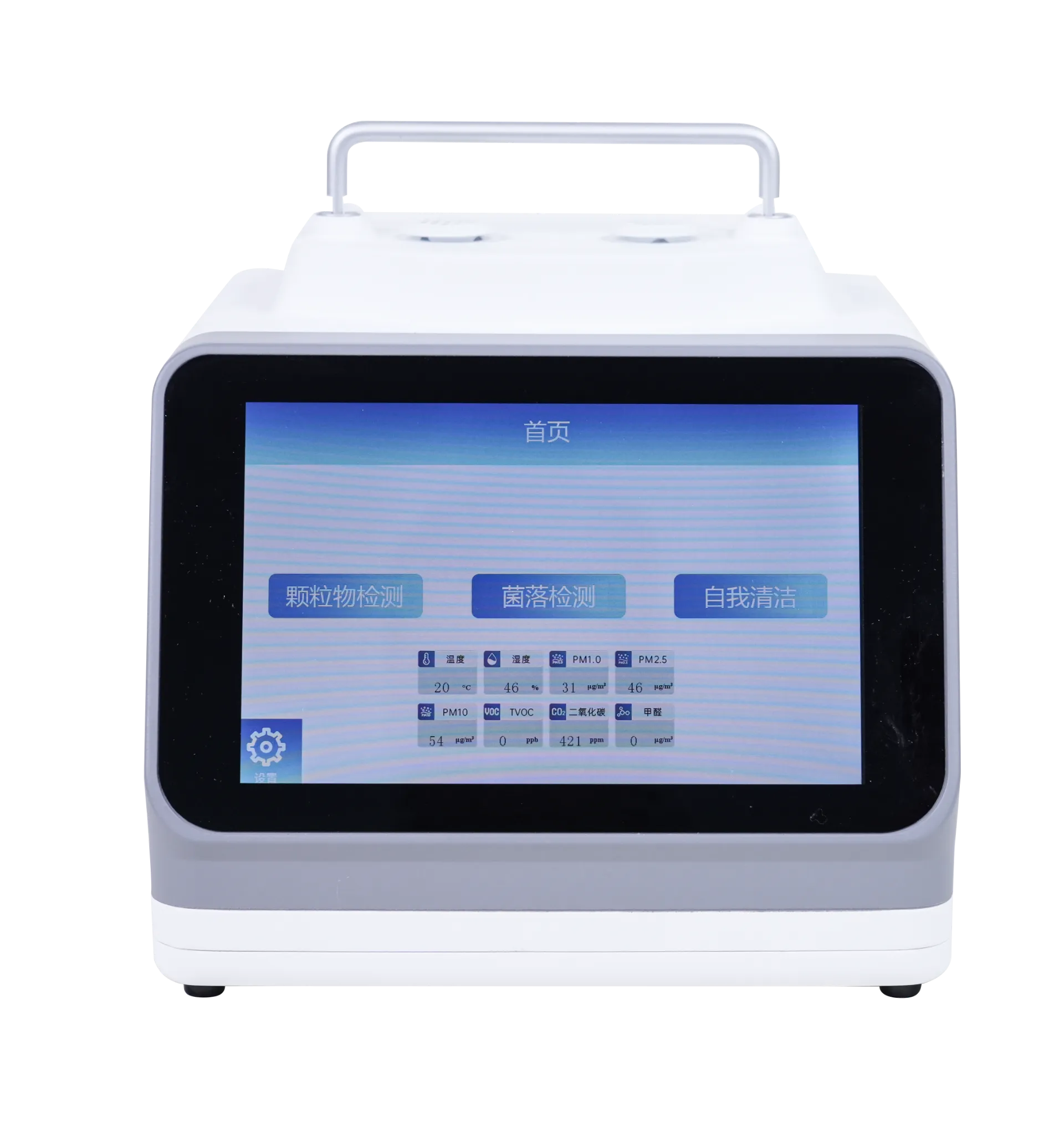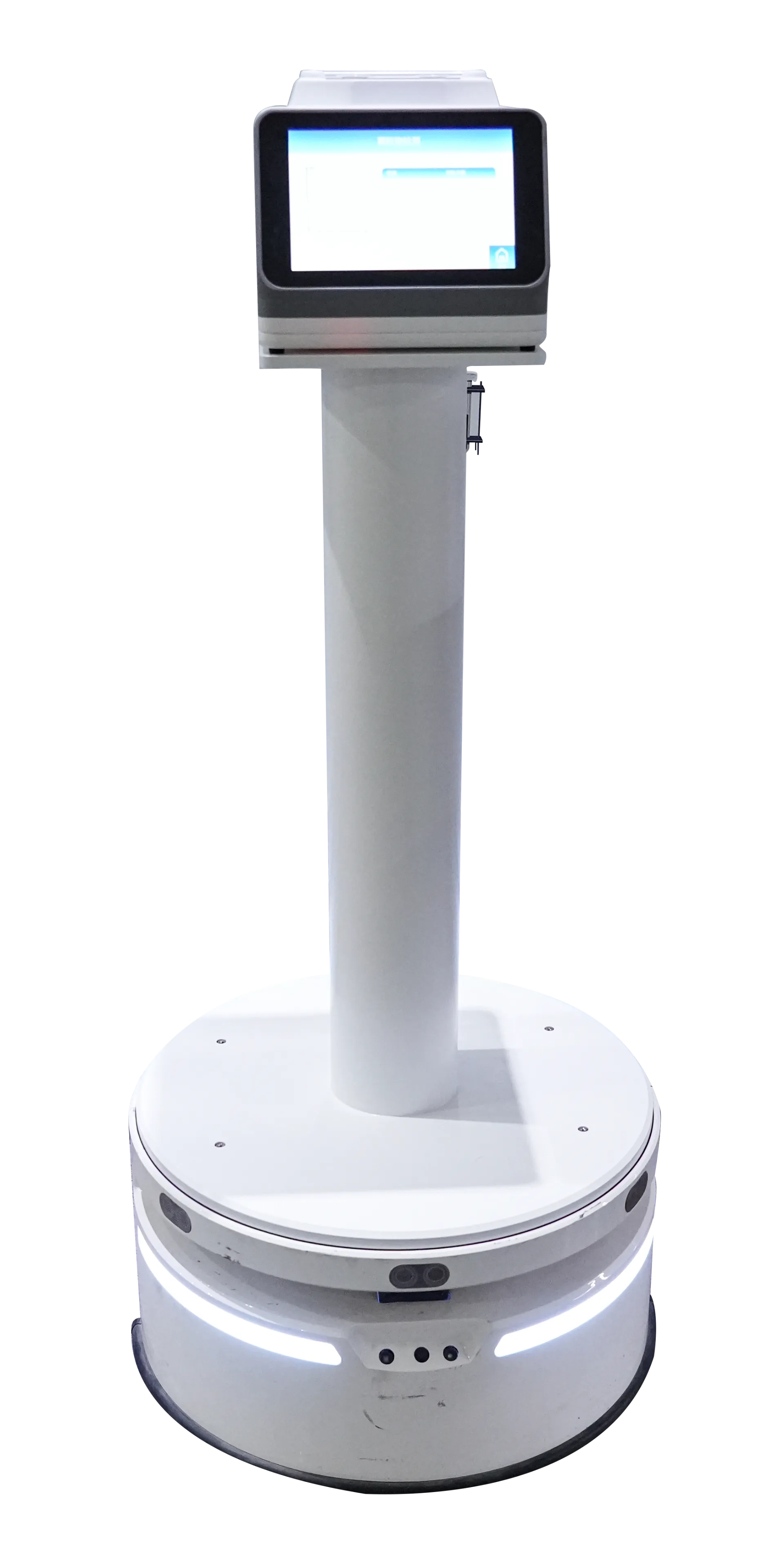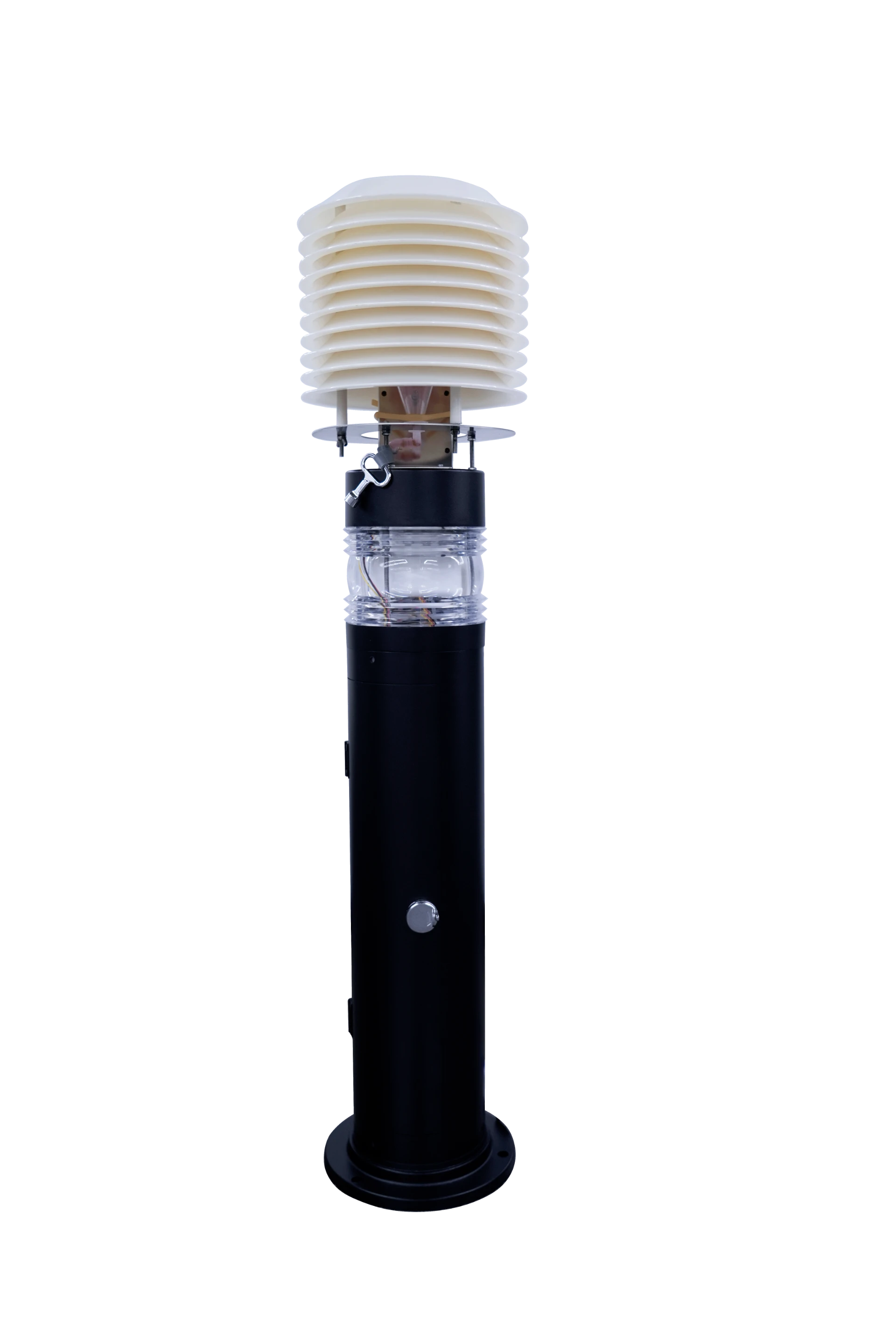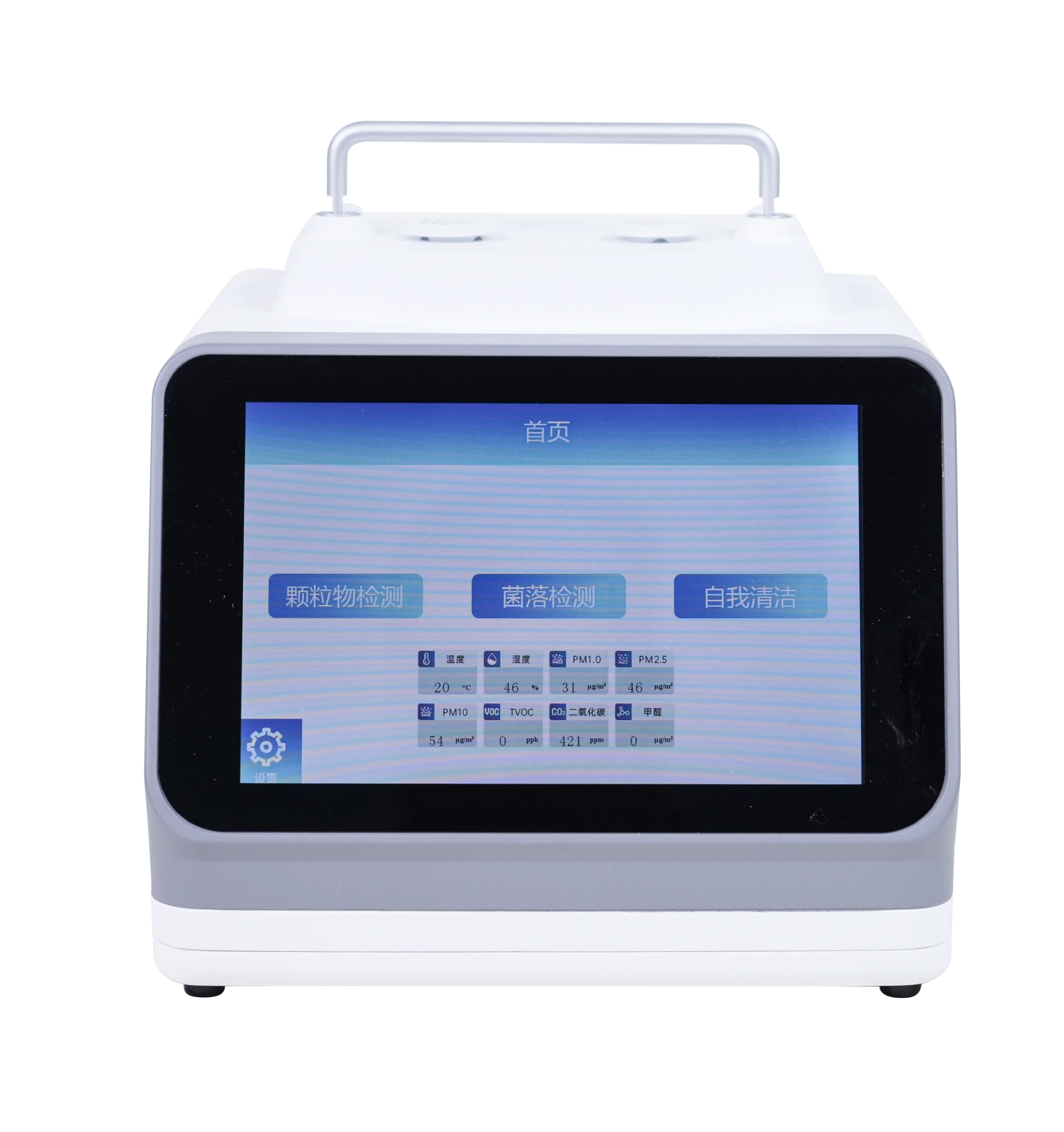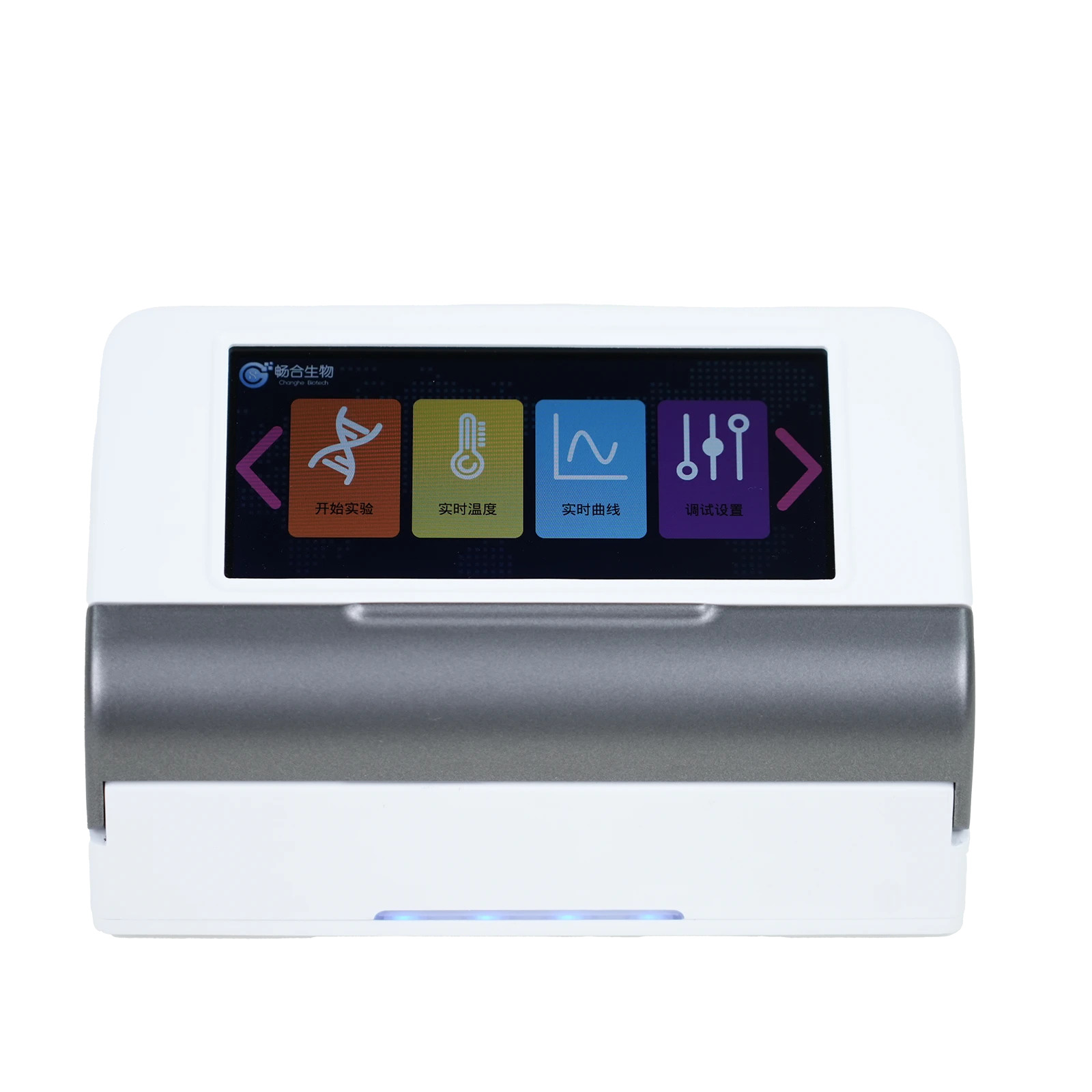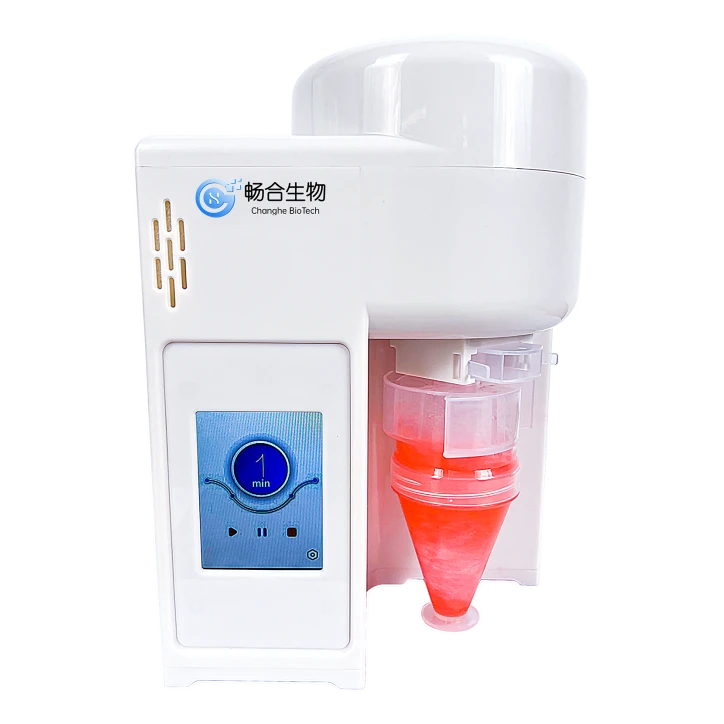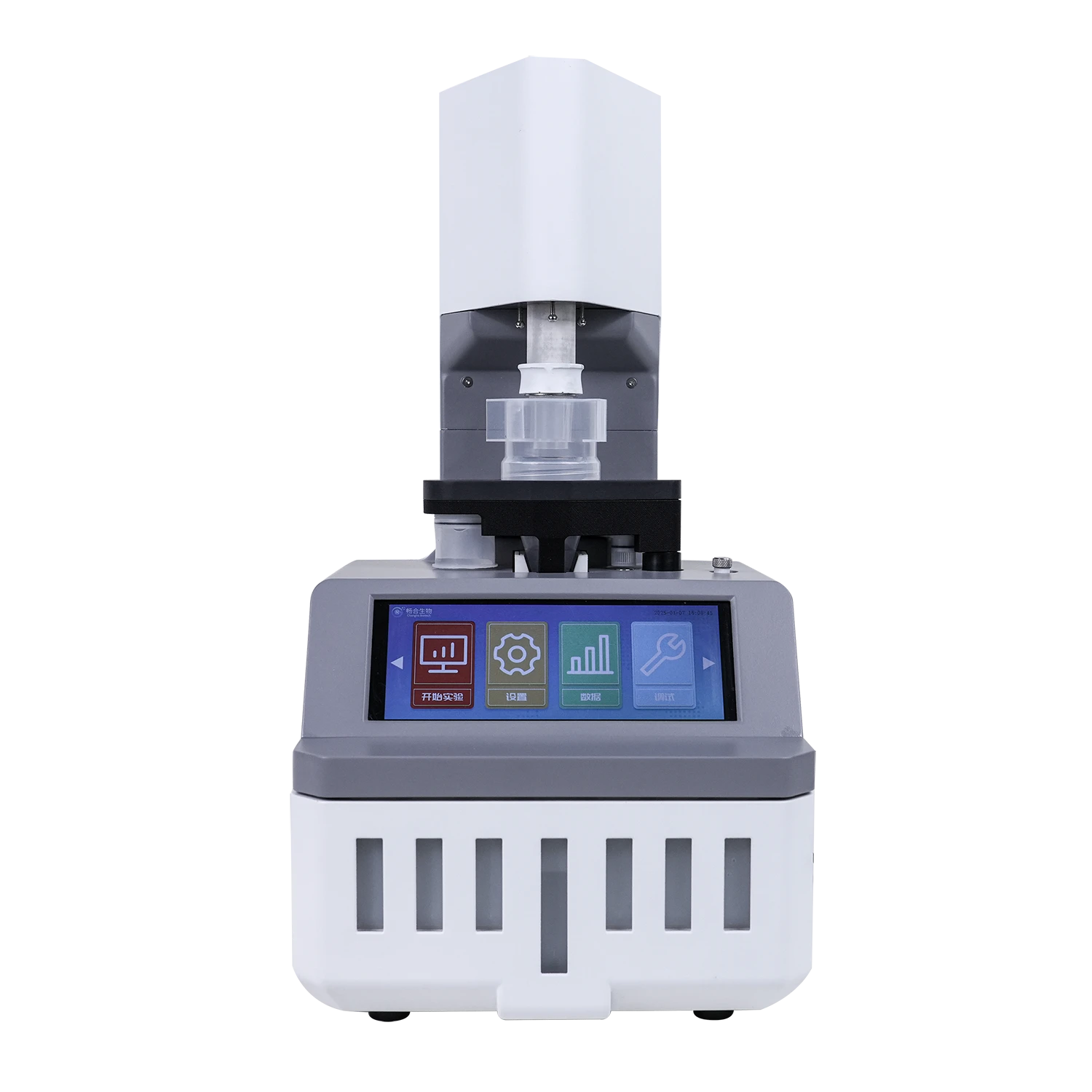
Professional Air Sample Mold Test Kit | Accurate & Fast Detection
Comprehensive industry analysis and technological innovations in air sample mold test solutions, mould detector devices, and precision mould testing equipment revolutionizing environmental health and safety standards.
SUZHOU CHANGHE BIOTECH CO., LTD - Industry Pioneers in Bioaerosol Detection
Global specialists in real-time biological particle detection systems since 2013
Industry Evolution in Mold Detection Technology
The field of air sample mold test has undergone a revolutionary transformation in the past decade. Traditional methods involving culturing samples in laboratories have gradually been supplemented—and in some cases replaced—by real-time detection systems. The global market for mould detector device solutions is projected to reach $5.2 billion by 2027, with a CAGR of 9.3% according to research by MarketsandMarkets.
Dr. Emma Richardson, Environmental Science Journal
Environmental Science Journal: Vol. 32, Issue 4 (2022)
Modern mould testing equipment has evolved to address critical industry needs: reducing time-to-results from days to minutes, minimizing human error in sample collection, providing quantitative data rather than subjective assessments, and enabling continuous monitoring. This technological evolution has been particularly vital in healthcare settings, food processing facilities, and water damage restoration services where rapid detection of fungal contamination is crucial for health protection.
Four Critical Technological Innovations
Fluorescence Spectroscopy
Advanced systems use UV excitation (typically 355-375nm) to stimulate intrinsic fluorescence in biological particles. This enables distinction between viable microorganisms and inert particulate matter.
Single-Particle Analysis
High-resolution photodiode arrays capture scattered light to measure particle size distribution with 200nm resolution. Simultaneously, photomultiplier tubes detect fluorescence across spectral bands.
AI Classification Algorithms
Machine learning algorithms trained on databases of thousands of particle signatures enable automatic classification of mold types including Aspergillus, Penicillium, and Stachybotrys species.
Environmental Compensation
Integrated temperature and humidity sensors enable calibration adjustments to maintain accuracy under varying atmospheric conditions from 10-90% RH.
Technical Specifications & Performance Comparison
Understanding the specifications of modern air sample mold test equipment is crucial for professionals selecting appropriate monitoring solutions. The table below compares key performance parameters across the current generation of detection systems:
| Parameter | Entry-Level Devices | Mid-Range Systems | Advanced Models | AST-1-2 Specifications |
|---|---|---|---|---|
| Detection Principle | Optical particle counting | Basic fluorescence | Multi-band fluorescence | Multi-band fluorescence + shape analysis |
| Particle Size Range | 0.5-10 μm | 0.3-15 μm | 0.2-20 μm | 0.3-20 μm |
| Flow Rate Accuracy | ±10% | ±5% | ±2% | ±1.5% |
| Time Resolution | 1 hour minimum | 15 minutes | 1 minute | 1 second |
| Fluorescence Channels | 1 (UV only) | 2-3 bands | 3-4 bands | 4 bands + scattering |
| Detection Limit (CFU/m³) | 200 | 50 | 10 | 5 |
| Data Output | Basic particle counts | Size distribution | Preliminary classification | Detailed classification + cloud reporting |
| Battery Life | 4-6 hours | 8-12 hours | 24+ hours | 30 hours continuous |
AST-1-2: The Next Generation Bioaerosol Monitoring Solution
Revolutionizing Mold Mildew Inspection
The AST-1-2 represents a breakthrough in real-time bioaerosol monitoring technology. This device performs continuous, single-particle measurement of atmospheric bacteria, molds, pollen and other biological particles with laboratory-grade accuracy.
By employing advanced fluorescence spectroscopy and precision optical systems, the AST-1-2 detects biological material in particles and provides detailed classification data based on size (0.3-20μm), shape characteristics, and multi-band fluorescent properties.
View Product SpecificationsKey Technological Innovations
What sets the AST-1-2 apart from conventional mould testing equipment is its integration of three complementary technologies:
- Diode-Pumped Solid-State (DPSS) Laser: Provides stable 355nm UV excitation with minimal thermal drift
- Multi-Anode Photomultiplier Array: Simultaneously detects fluorescence in 4 distinct spectral bands
- Integrated Environmental Sensors: Measures temperature (±0.3°C), humidity (±2% RH), and pressure (±50Pa) for data compensation
This technological synergy enables the AST-1-2 to distinguish between mold spores, pollen, bacteria, and non-biological particles with >92% accuracy according to third-party validation studies.
Comprehensive Measurement Capabilities
Particle Characterization
- Size: 0.3μm to 20μm (128 size channels)
- Shape analysis: Aspect ratio (AR)
- Fluorescent intensity: 4 wavelength bands
Environmental Parameters
- Temperature: -10°C to 50°C (±0.3°C)
- Relative Humidity: 0-95% (±2%)
- Pressure: 500-1100 hPa (±50Pa)
Performance Metrics
- Flow rate: 5.0 L/min (±1.5%)
- Zero count:
- Coincidence error: 6 particles/m3
Data Management
- Data output: SD card, USB, Ethernet, Wi-Fi
- Cloud connectivity: HTTPS API
- Power consumption: 24V DC, 50W max
Industry Applications & Impact
Modern air sample mold test technologies have transformed multiple sectors by enabling immediate detection and rapid response to microbial contamination. The AST-1-2 is deployed across diverse environments where air quality monitoring is critical:
Healthcare Facilities
Hospitals utilize continuous monitoring in operating theaters, isolation rooms, and transplant units to prevent healthcare-associated infections. Johns Hopkins Medical Center reported 36% reduction in mold-related HAIs after implementing real-time bioaerosol monitoring systems.
Indoor Air Quality Management
Commercial building managers employ mould detector device solutions to identify hidden moisture problems and validate remediation effectiveness. Continuous monitoring detects emerging issues before visible signs appear.
Food Processing & Packaging
Production areas with stringent microbial requirements benefit from immediate contamination alerts rather than waiting days for lab results. Real-time data prevents costly recalls and production shutdowns.
Restoration Services
Water damage specialists use portable mold mildew inspection equipment to verify clearance after remediation, validating that spore counts have returned to acceptable levels before reconstruction begins.
Professional FAQ: Technical Aspects of Mold Detection
1. What technical characteristics distinguish high-performance mould detector device systems?
Premium detection systems feature true multi-wavelength fluorescence detection (typically 4+ bands), high-resolution particle sizing (>64 channels), low-flow sampling accuracy (±2% or better), advanced coincidence correction algorithms, and environmental compensation for temperature and humidity effects. Laboratory validation against culturing methods should demonstrate >90% sensitivity and specificity for common fungal species.
2. How do the detection capabilities differ for mold spores versus fungal fragments?
Traditional culturing methods primarily detect viable spores, while advanced fluorescence systems also identify non-viable spores, hyphal fragments, mycotoxin-containing particles, and bioaerosols carrying microbial volatile organic compounds (MVOCs). The AST-1-2 utilizes distinctive fluorescence signatures across the 420-575nm spectrum to differentiate these particle types at sizes down to 0.3μm.
3. What particle characteristics enable species classification in real-time detection systems?
Classification algorithms analyze multiple parameters: particle size distribution (characteristic size ranges for different species), aspect ratio (spherical pollen vs elongated fungal structures), and fluorescence intensity ratios across different wavelength bands (distinctive fluorophores in molds like Aspergillus vs Penicillium). The AST-1-2 database includes signatures for 57 common fungal species and 23 pollen types.
4. How should sampling protocols differ for mold mildew inspection in high-humidity environments?
Systems operating above 85% RH require specialized anti-condensation heaters and flow compensation algorithms to maintain accuracy. Sampling duration should increase by 25-40% to account for higher particle buoyancy in humid air. The AST-1-2 incorporates RH compensation coefficients that automatically adjust concentration calculations based on real-time environmental readings.
5. What are the calibration requirements for regulatory compliance in healthcare settings?
ISO 17025 accredited flow calibration annually, spectral calibration every 6 months, zero-count verification weekly. The AST-1-2 features automated zero checks and calibration reminders. Documentation should include calibration certificates traceable to national standards, with all procedures conforming to ISO 14698 cleanroom monitoring standards.
6. How does particle density affect the accuracy of air sample mold test results?
At concentrations above 106 particles/m³, coincidence errors become significant in optical counters, requiring mathematical correction algorithms. The AST-1-2 incorporates proprietary adaptive coincidence compensation that maintains ≤5% counting error up to 2×107 particles/m³, verified through controlled chamber testing.
7. What technical differences exist between lab-based and portable mould testing equipment?
Field instruments prioritize robustness (IP54 minimum), battery operation (5+ hours), portability (
The Future of Bioaerosol Monitoring
Ongoing research focuses on enhancing specificity through machine learning algorithms trained on multi-parameter particle signatures. Next-generation systems will incorporate molecular detection techniques like LAMP amplification to identify specific fungal species with high confidence. The industry is moving toward integrated smart monitoring networks that combine real-time air sample mold test data with building automation systems to automatically respond to contamination events.
SUZHOU CHANGHE BIOTECH CO., LTD remains at the forefront of these innovations with its ongoing research into novel detection methodologies and continuous improvement of the AST-1-2 platform.
- National Institute of Environmental Health Sciences. (2023). "Validation of Real-Time Bioaerosol Monitoring Systems." https://www.niehs.nih.gov/research/aetb/journal/bioaerosol-detection-validation
- International Society for Indoor Air Quality and Climate. (2022). "Position Paper: Advanced Airborne Fungal Detection in Built Environments." https://www.isiaq.org/publications/position-paper-mold-detection
- Environmental Science & Technology Journal. (2023). "Recent Developments in Field-Portable Bioaerosol Sensors." https://pubs.acs.org/doi/abs/10.1021/acs.est.3c01245
-
High-Efficiency Air Sampling Bacteria Solutions for Accurate DetectionNewsJul.22,2025
-
Premium Bioaerosol Sampler: Accurate Airborne Pathogen CollectorNewsJul.22,2025
-
Real-time Bioaerosol Monitoring Device | Accurate DetectionNewsJul.21,2025
-
TB Real Time PCR Accurate Monkeypox Virus Detection Kits & PCR SystemsNewsJul.08,2025
-
Biological Sampling Cycle Optimize Your Sampling with Advanced échantillonnage biologique SolutionsNewsJul.08,2025

